created, $=dv.current().file.ctime & modified, =this.modified
tags: Shadows
Dada and Shadow
Duchamp on discussion of Shadows and other dimensions
“It presupposes the existence of another ’ dimen. sion,’ one of which man becomes aware only in moments of revelation—a • ‘meta-world” which Duchamp has described “fourth-dimensional” and posited in his works as the “unknown quantity.” We need not consult Einstein to grasp it; Duchamp ex. plains very simply that if a shadow is a two-dimensional projection of a three-dimensional form, then a three-dimensional object must itself be the projection of a four-dimensional form. The most ordi- nary object thus holds the possibility of an epiphany; given the right insight into its nature, one need only single out the object and detach it from its ordinary context to make manifest its meanings. Duchamp rformed this magical act for the first time in 1913 when, by the ole act of selection, he endowed a common bicycle wheel with the properties of a revelation”
Man Ray would use a unique form of shadows in “The Rope Dancer Accompanies Herself With Her Shadow”
After seeing a dancer, Man Ray was cutting shapes in paper that reminded him of her movements. He was dissatisfied, and looked down to see the scraps on the floor. Uses the discards of the shapes he was cutting as construction of a shadow.
“Glancing down, he noticed that by chance they had formed an abstract pattern. Comparing the accidental pattern with shadows that a dancer might have cast, he incorporated it into his composition.”
Christian Schad - Several of Schad’s abstract photographs were acquired by Tzara, who dubbed them “schadographs.” This sounds like “shadowgraph,” a process used by such early photographers as Talbot (see here). Tzara may have been aware of this, but was perhaps also alluding to the meaning of the German word schaden, which means “damaged,” evoking the Dada sense of things falling apart.
Andy Warhol Shadows
I saw this at Dia Beacon in 2023.
This instagram has wonderful examples https://www.instagram.com/darkgloomyart/?hl=en
Spirit by George Roux
The Old Stage Coach of the Plains (1901) by Frederic Remington
Dan Hillier WIP
John Butler Yeats, ‘Under Candlelight’
Christ of Saint John of the Cross Salvador Dalí
The shadow by Daniela Astone
Ernest Biéler’s “Confidence in the Shelter of the Woods” from 1898
Hugues Merle (French, 1823-1881) Tristan and Isolde (1870) Oil on canvas. Private Collection.
‘Good Night’ by Carl Larsson (1853 - 1919)
Jacques de Breville
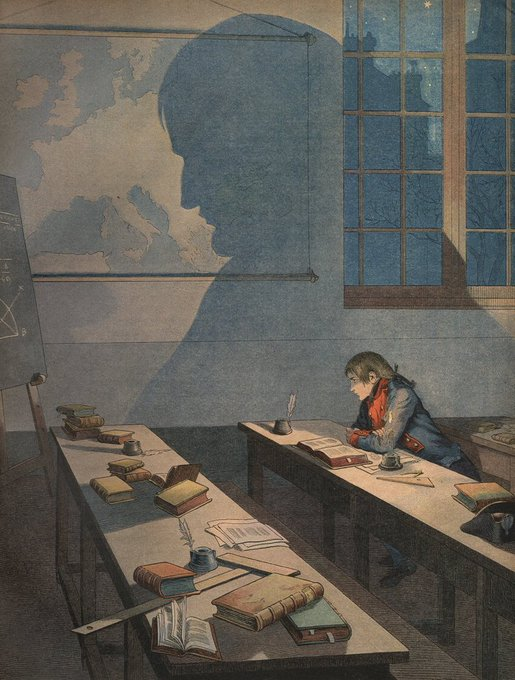
Two Laughing Girls by Pere Borrell del Caso (1880)
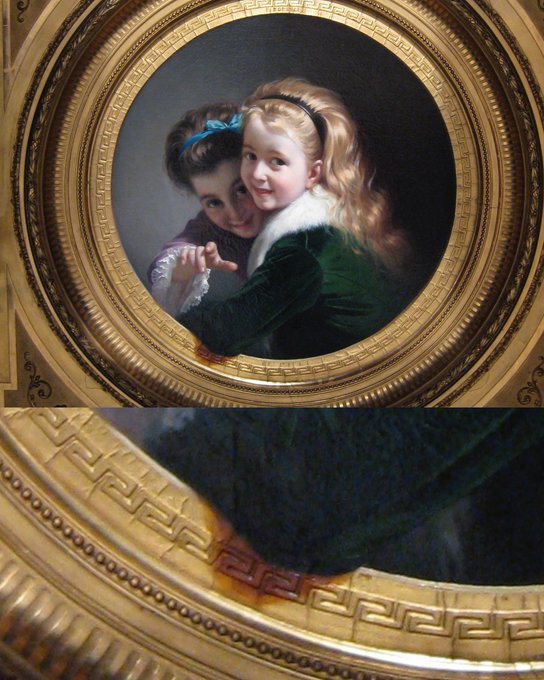
Sam wolfe connellly - a bit late
It occurs to me that underpainting can be seen as a type of shadow. We have a tonal, monochromatic subsurface that is a fundamental part of the finished painting. The shadow of the underpainting can be used to render shadows correctly in future steps. In contrast to actual shadows the dimensions of the scene are not transformed, but other parameters of the “overpaints” are transformed.**
A shadow Poem INVITACIÓN AL AIRE
Te invito, sombra, al aire.
Sombra de veinte siglos,
a la verdad del aire,
del aire, aire, aire.
Sombra que nunca sales
de tu cueva, y al mundo
no devolviste el silbo
que al nacer te dio el aire,
del aire, aire, aire.
Sombra sin luz, minera
por las profundidades
de veinte tumbas, veinte
siglos huecos sin aire,
del aire, aire, aire.
¡Sombra, a los picos, sombra,
de la verdad del aire,
del aire, aire, aire! Rafael Alberti
“Between the idea
And the reality
Between the motion
And the act
Falls the Shadow
For Thine is the Kingdom
Between the conception
And the creation
Between the emotion
And the response
Falls the Shadow
Life is very long
Between the desire
And the spasm
Between the potency
And the existence
Between the essence
And the descent
Falls the Shadow
For Thine is the Kingdom
For Thine is
Life is
For Thine is the
This is the way the world ends
This is the way the world ends
This is the way the world ends
Not with a bang but a whimper.”
ts eliot hollow men
TODO and additions
Shadow of horror Shadow as comfort Shadow in music
- Oklou’s boiler room https://www.youtube.com/watch?v=_ukZYoxfyto
shadow vs darkness. Differences here
Underpainting
Vampire needing shadow
Shadow is silence? Silence is a hole?
Shadowgraphy (art)
https://michaelscroggins.wordpress.com/shadowgraph/
3D shadow type lesson
https://15466.courses.cs.cmu.edu/lesson/shadows
The reason why shadows is expensive to calculate is because shadows have to take into consideration how objects affect themselves and other objects.
Other basic 3D rendering techniques (lighting, texturing) deal with objects in a scene independent of other objects. Shadow cinema - https://filmlifestyle.com/shadows-in-cinema/ Shadows depicted as good, and not evil - examples Everyone pick a scene that is shadow influenced in a film, or a short. Is the shadow demonized because of its transformation? Is encountering a 1:1 scale human shadow less of a fright than something that is scaled and warped?
Kage, ma, wabi sabi (For Ryotaro Matsumura, an award-winning tea ceremony master in Yokohama, wabi-sabi is an indispensable part of his daily practice. To him, it’s the seemingly small things that capture the essence of wabi-sabi (“not a full moon, but a moon covered behind clouds; not new, symmetric objects, but old, asymmetric objects”).)
[http://wesclark.com/jw/sound_propagation.html](http://wesclark.com/jw/sound_propagation.html https://en.wikipedia.org/wiki/Acoustic_shadow https://www.huduser.gov/portal/sites/default/files/pdf/Shades-and-Shadows.pdf [https://architizer.com/blog/inspiration/collections/throwing-shade-architectural-sun-blocks/](https://architizer.com/blog/inspiration/collections/throwing-shade-architectural-sun-blocks/%5C) https://www.manray.net/the-rope-dancer.jsp Sweet home 40min attack by shadow Louis Kahn created buildings in which shadows were a key element, which he expressly argues that increasing reliance on electric light diminishes engagement with the outside world. Accordingly he contends that in turning on a switch architects “forget the endlessly changing qualities of natural light, in which a room is different every second of the day” (Kahn 2003, 252). Default avatars are shadows
** ** In pickpocketing an object will be used as cover to mask the act, this is termed shade.
a strong role will shadow the identity of the artist, or the actor. There is a tension here. The stars of The Office, always being named by their roles. Duchamp after Nude Descending a Staircase, He had come face to face with his prefabricated fame - one pushing him into the shadow of that painting. Iconic as it is, the painting threatened to hijack his identy by usurping it. “only a shadowy figure behind the reality of that painting.”
Hammer found that under certain conditions of vacuum and voltage he observed a blue glow around the positive pole in a vacuum bulb and a blackening of the wire and the inside of the glass bulb at the positive pole. Hammer’s discovery was first called “Hammer’s Phantom Shadow,” but when Edison patented the electric light bulb in 1883 this thermionic emission became known as the “Edison Effect,” and was patented on November 15, 1883 (U.S. patent 307,031).[12][13] “The discovery of hte edison effect was to prove one of the crucial discoveries that has made the modern world possible” It was the link between electrical light and the science of electronics, a new type of switch. Shadowless church https://twitter.com/Rainmaker1973/status/1771169597460226419
Greek myth of the first artist Skiagraphia Skiagraphia is a painting technique developed by ancient greek painter Apollodorus, used to create shadows in an image.
Skiagraphia is often described as a hatching technique used to create the illusion of forms through shading.[1] The shading is created by the use of curved lines, either by the use of hatching or cross-hatching. Within this same approach, painters can use different colors to add shade to an area.
Archaeologist Eva Keuls, using passages from Aristotle, suggested that “skiagraphia” was a technique that utilized patches of color that blend from afar, similar to the neo-impressionist paintings of Georges Seurat,[2] but this is disputed by Elizabeth G. Pemberton, who instead suggests that the passages from Aristotle are only in relation to shade and not color.[3]
** In Western painting: High Classical (c. 450–400 bc)
The Athenian painter Apollodorus introduced skiagraphia (literally “shadow painting”), or shading technique. In its simplest form this consists of hatched areas that give the illusion of both shadow and volume.
Dementia and Shadows - Sundowning and Dementia https://www.alzheimers.org.uk/about-dementia/symptoms-and-diagnosis/symptoms/sundowning Uneven indoor lighting and reflective surfaces can sometimes cause confusion by creating disturbing shadows or mirrors. Close the curtains or blinds once it starts to get dark and cover the television with a dust cover, if it’s not being used.
https://www.ncbi.nlm.nih.gov/pmc/articles/PMC3466040/ The Shadow People: A Glimpse Into Dementia With Lewy Bodies Shadow book https://shaplaboo.com/collections/books/products/thumbelina
**
Anila Quayyum Agha: Dualities
I saw this at the Bruce in 2024.
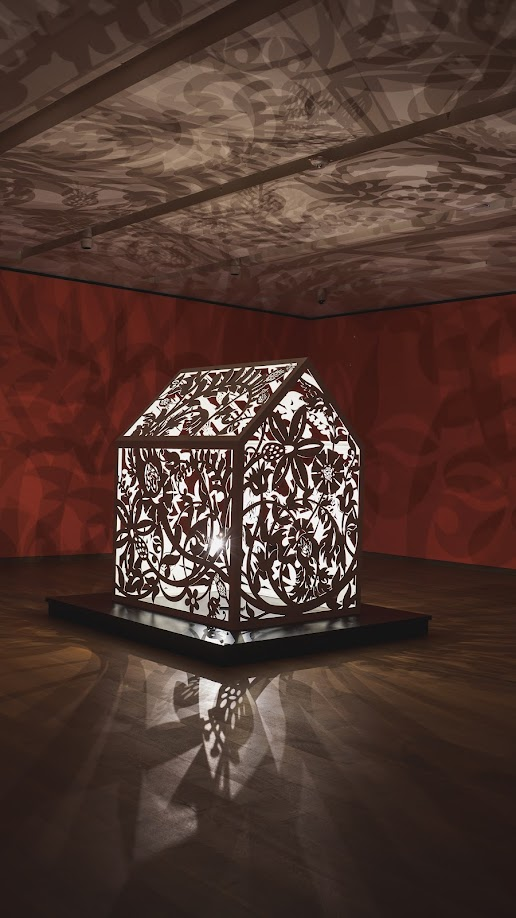
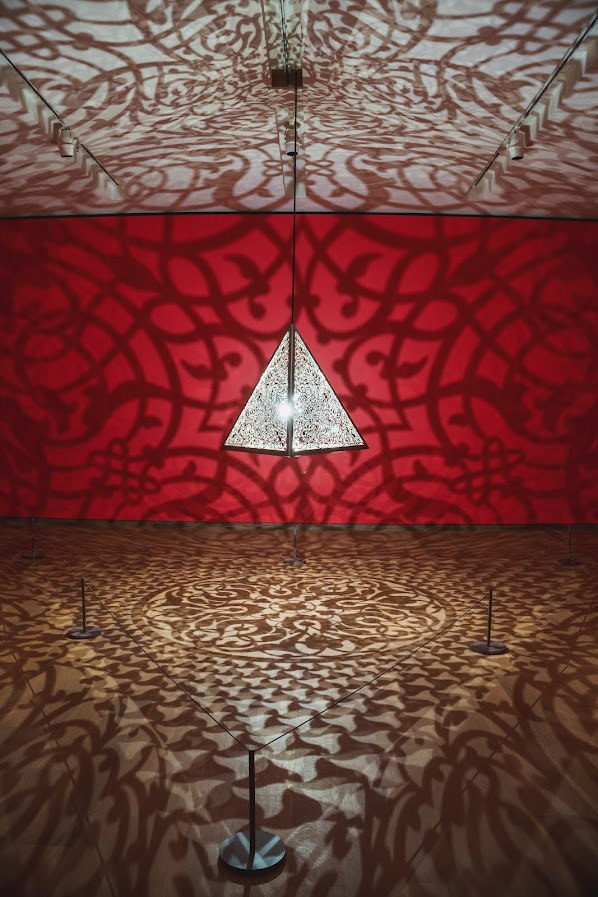
Shademap will show shadows at any place at any time on map https://shademap.app/
Maxim Gorky - “Last night I was in the Kingdom of Shadows” Schatten – Eine nächtliche Halluzination
the shadow as an indexical sign Cast shadows inform us about the solid objects that produce them, even if we do not see the objects themselves, as when the presence of a person hiding behind the the corner of a house is betrayed by that person’s shadow on the pavement. In this way shadows testify to the existence of displaced objects in both space and time, similar to a photograph or footprints. A sign physically caused by an object and referring to that object, now spatially and/or temporally removed, is what semiotics, the science of signs, describes as index.
An interesting thing about indexical signs is that they tend to stimulate the imagination more when they appear on their own, rather than with a referent.
Waluigi as the shadow of a shadow, Waluigi, certainly shadow form. Ma (間) ma-luigi
I, We, Waluigi: a Post-Modern analysis of Waluigi by Franck Ribery
Waluigi is the ultimate example of the individual shaped by the signifier. Waluigi is a man seen only in mirror images; lost in a hall of mirrors he is a reflection of a reflection of a reflection. You start with Mario – the wholesome all Italian plumbing superman, you reflect him to create Luigi – the same thing but slightly less. You invert Mario to create Wario – Mario turned septic and libertarian – then you reflect the inversion in the reflection: you create a being who can only exist in reference to others. Waluigi is the true nowhere man, without the other characters he reflects, inverts and parodies he has no reason to exist. Waluigi’s identity only comes from what and who he isn’t – without a wider frame of reference he is nothing. He is not his own man. In a world where our identities are shaped by our warped relationships to brands and commerce we are all Waluigi.
The Shadow Work Journal 2nd Edition is an updated and expanded version of the bestselling self-help book that has helped countless readers to confront and integrate their shadow selves. In this journal, you’ll find a series of thought-provoking prompts and exercises designed to help you explore the hidden aspects of yourself that you may have been suppressing or denying. Through the process of shadow work, you’ll gain a deeper understanding of your fears, insecurities, and negative patterns of behavior, and learn how to embrace them in order to become a more integrated and authentic version of yourself.
Rogue planets
IEEE Spectrum article: A TRILLION ROGUE PLANETS AND NOT ONE SUN TO SHINE ON THEM
Not only do rogue planets outnumber visible stars, they probably also outnumber conventional planets like Earth, the ones that orbit their own suns and bask happily in their warmth.
The discovery of free-floating, rogue planets also highlights how technology is enabling us to see into previously hidden parts of the universe. These objects emit no light and cast no shadows.
Book of Shadows
A Book of Shadows is a book containing religious text and instructions for magical rituals found within the Neopagan religion of Wicca. Since its conception, it has made its way into many pagan practices and paths.
Gerald Gardner, the “father of Wicca”, first introduced the Book of Shadows to people that he had initiated into the craft through his Bricket Wood coven in the 1950s. He claimed that it was a personal cookbook of spells that have worked for the owner; they could copy from his own book and add material as they saw fit. He said that the practice of Witches keeping such a book was ancient, and was practised by the Witch-cult throughout history. According to tradition, Gardner claimed that the Book of Shadows was burned after a person died, so that it would not be discovered that they had been a witch.
Jiro Takamatsu- Shadows
in Being No One by Thomas Metzinger
The book you are holding right now—that is, the unified sensations of its color, weight, and texture—is just a shadow, a low-dimensional projection of a higher dimensional object “out there.”
Goethe’s Colored Shadows Goethe discusses phenomenon like colored shadows (complementary colors) in Theory of Colours
Newton says shadows are mere absences of light. Since the visual response to a lack of stimulation is black, all shadows would then be black. In his attack on Newton’s optics, Goethe drew attention to subtle conditions under which there appear to be blue shadows. According to Goethe, all hues are colored shadows. Later, color scientists, most famously Edwin Land (founder of the Polaroid Corporation), appear to produce shadows of virtually every hue. Most contemporary color scientists inconsistently accept both Newton’s account of light and standard, textbook demonstrations of colored shadows. They should regain consistency by distinguishing between shadows and “filtows.”
Shadowtime (opera)
Shadowtime is the first opera by Brian Ferneyhough, written to an English libretto by Charles Bernstein.
In its seven scenes, Shadowtime explores some of the major themes of Benjamin’s work, including the intertwined natures of history, time, transience, timelessness, language, and melancholy; the possibilities for a transformational leftist politics; the interconnectivity of language, things, and cosmos; and the role of dialectical materiality, aura, interpretation, and translation in art. Beginning on the last evening of Benjamin’s life, Shadowtime projects an alternative course for what happened on that fateful night.
Opening onto a world of shades, of ghosts, of the dead, Shadowtime inhabits a period in human history in which the light flickered and then failed.
Shadowtime
Is a Siouxsie and the Banshees song
Turn your wish to a vapour, the silhouette fades Eclipse your blue eyes and the outline remains From the house of the moon to the stars up above Amidst the comets, first sight of love So begin the countdown
In shadowtime (the silhouette fades)
Shadowtime (first sight of love)
Shadowtime (the silhouette fades)
Shadowtime (first sight of love)
Shadowtime (the silhouette fades)
Shadowtime (first sight of love)
Shadowtime (the silhouette fades)
Shadowtime (first sight of love)
Thought
What is this shadowtime? I can’t find a refence but it keeps appearing
https://bureauoflinguisticalreality.com/portfolio/shadowtime/
The Bureau of Linguistical Reality was established in 2014 for the purpose of collecting, translating and creating a new vocabulary for the Anthropocene
Definition: A parallel timescale that follows one around throughout day to day experience of regular time. Shadowtime manifests as a feeling of living in two distinctly different temporal scales simultaneously, or acute consciousness of the possibility that the near future will be drastically different than the present.
One might experience shadowtime while focused on goal oriented conversations, tasks and planning for life as we have known it—(college, career or occupational ambitions). During such moments there is a creeping sense of concerns that would make all said planning obsolete or seem unimportant, i.e. the collapse of the Larson B Ice Shelf that will accelerate sea level rise. Shadowtime may also occur when one is preparing a meal for their child and suddenly realizes that an endemic flower that had evolved over 42.7 million years has gone extinct within their child’s lifetime.
Shadowtime is not exclusively a negative experiences demonstrated with epoquietude. It can make one reflect quietly on the tricksterish desire and escapism lying behind apocalyptic vision, as well as catalyzing an embrace of the unknown and a counteraction to anthropocentric hubris. While one may feel that shadowtime follows them always, the sudden experience of the presence of shadowtime amid day to day activities is often extremely disorienting.
Usage: Kane was intently working on his presentation which was due the next morning, but as he looked up and saw the moon it occurred to him that the moon had been rising and setting for 4.5 billion years, moving ever further away, he felt shadowtime for the rest of the evening.
Translated into a game
This VR essay guides you from Ivan Sutherland’s historical creation of the first head-mounted VR display through different iterations of simulation theory in a powerful, embodied critique of virtual realities as a possible solution to current emergency conditions.
‘Shadowtime’ is a new word coined for our age by Ranu Mukherjee and the Bureau of Linguistical Reality, describing the feeling of occupying two irreconcilable times simultaneously. It is being stuck in a traffic jam on your way to work and realizing that the gas in your engine is the compressed mass of prehistoric creatures. It is scrolling through your phone and remembering that the earth is changing irrevocably. In ‘Shadowtime’, directors Sister Sylvester and Deniz Tortum take these temporal incompatibilities and explore them in the realm of virtual reality and simulation theory.
Phantom Menace Poster

Eclipse
Through composite images of the partial eclipses the shadow of the earth can be seen.
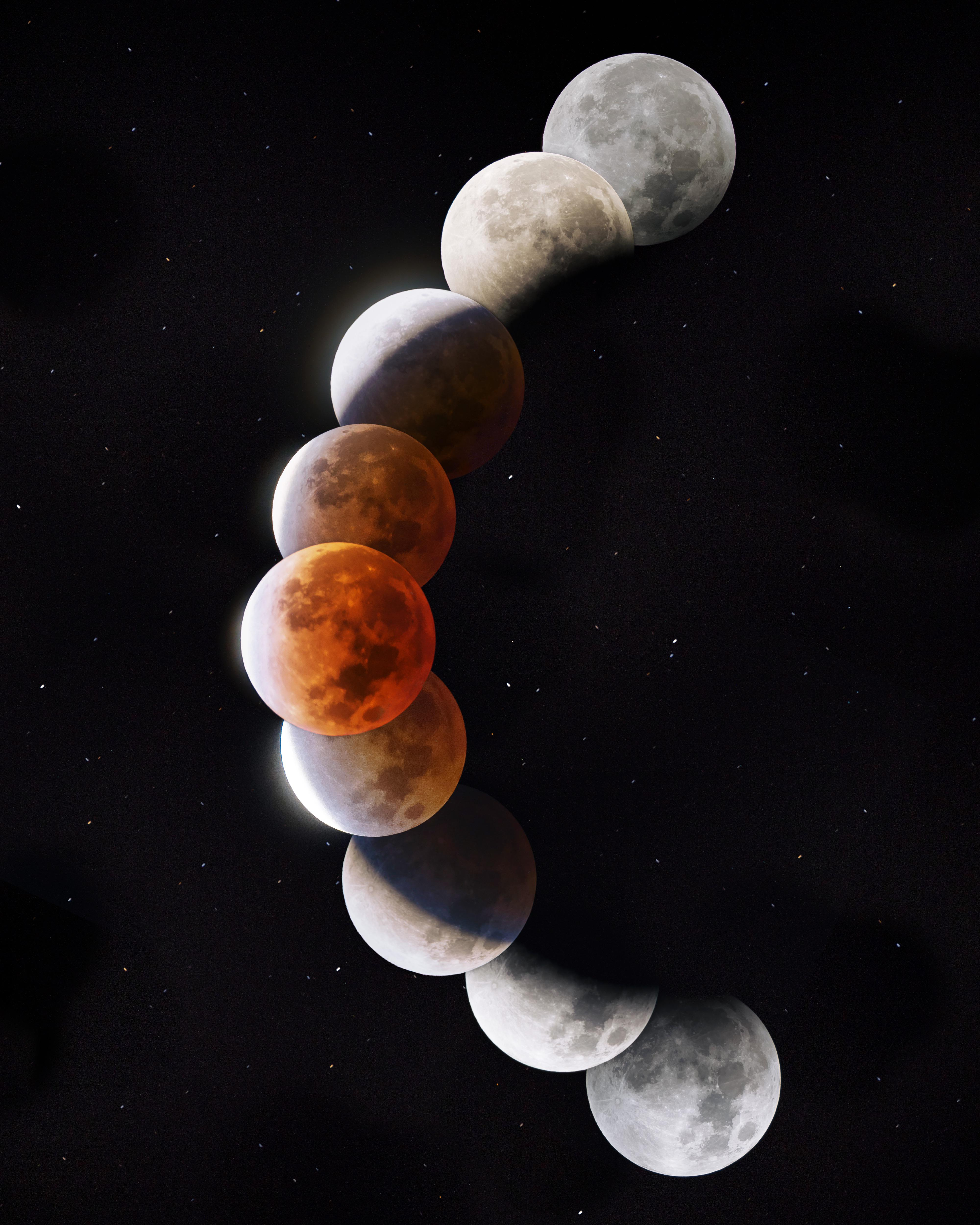
The Shadow (1981)
rel:Walking as an Artistic Practice by Ellen Mueller
Shadowing someone, as a term of following.
In The Shadow (1981), Sophie Calle requests her mother hire a detective to follow her and photograph her without her knowledge (the detective did not know that Calle knew he was following her).2 While Calle initiated this project, and clearly provided consent, the project still examines the ideas of watching and being watched without knowing when and where it’s happening. She later exhibited the photographs and descriptions, continuing to ask questions about public and private control, as well as voyeurism, exhibitionism, and chance.
Survey of Text Etymology, Connections to Fiber, Body
Shadow (in books)
A discoloration of a leaf or cover caused by the use of stickers, tape, etc. The discoloration can be caused by a chemical reaction from the adhesive or from a difference in sun exposure. This is sometimes referred to as Tape Shadow or Sticker Shadow.
This is you here - Albarrán Cabrera

Monopods
In ancient times mythology there were creatures known as monopods or skiapods (shadow+foot) which were dwarf-like creatures with one enlarged foot which they extended upwards to provide shade from the southern sun

The race of Sciopodes are said to live in Ethiopia; they have only one leg, and are wonderfully speedy. The Greeks call them σκιαπόδες (“shade-footed ones”) because when it is hot they lie on their backs on the ground and are shaded by the great size of their foot - Isidore of Seville
Shadow Garment

Rembrandt The Supper at Emmaus
